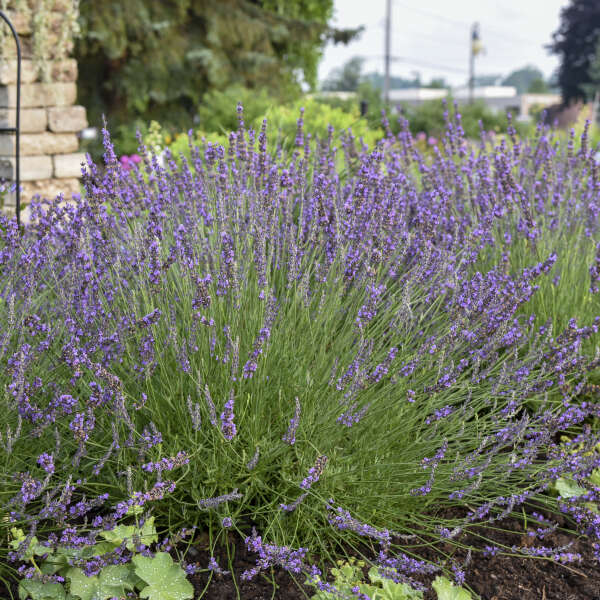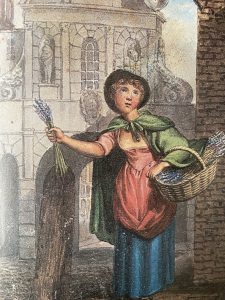Spring is in the air on the western slopes of the Rockies, which means nights can still drop to 20 degrees F, but days are warm(ish). Yet our bluebird skies are scattered with fluffy white clouds, and we’re dreaming of gardens to come and greenhouses to fill. Our gardens beckon…as do the nurseries. Yesterday, I brought home two new lavender plants of the sort I have come to favor, ‘Phenomenal’, which I first grew in Pennsylvania. The plant was first discovered by a commercial grower near Philadelphia, and I had a few plants from him to try out. I was hooked from that point.

Formally known as Lavandula intermedia ‘Phenomenal’ PP24193, is a hybrid out of the traditional French lavender that purples the fields of Provence. It took a while to hit the market, but is now widely available; ‘Phenomenal’ is all the name implies: silvery grey foliage, long, densely flowered spikes held high above the naturally rounded bush. And hardy enough that even at high elevation (over 2000 feet, and I garden at 6000+) it performs well enough to earn its place in my garden; the fact that the climate is arid and sunny, and the soil, gritty and free-draining suits lavender well as it doesn’t enjoy have damp feet and needs sun to bring out the best it has to give (thinks, don’t we all?)

As far as I’m concerned, a garden isn’t worth having without lavender, and reading antiquarian gardening texts, lavender was long valued for all sorts of reasons, not least of which was its use for making scented oils, perfumes, and other herbal remedies. In her book The Magic of Herbs (publ. 1920), Mrs. C.F. Leyel provides a lively history of how flowers and herbs were used from ancient times to the early 18th century; one of my favorite chapters includes a section on “Quacks of Ancient Greece”, like one Lucius Clodius, who would provide a poisonous drug for the right price. Mrs. Leyel also gives recipes for all sorts of scented goodies and snippets of info along the way, like the notion that the addition of cloves improves the scent of lavender water. Next time I’ve got my alembics and still up and running, I must remember to add some cloves to the distillation. “But flowers distilled,” as Shakespeare observed, “though they with winter meet, lose but their show, their substance still lives sweet.”

I visited Matanzas Creek winery in March 2001, and met with the landscape architect, Gary Ratway at their location near Santa Rosa, California; Matanzas Creek was one of the earliest commercial lavender fields established, turning a randomly used decorative shrub into a viable agricultural commodity. Ratway, whose practice is named Integrated Design, saw the similarity between the hills of southern France and the winery’s location, climate, and soils, so in the early 90s began transforming two acres of the property into fields planted predominantly with ‘Provence’, the culinary lavender, and ‘Grosso’, the perfumier’s choice. The lavender fields serve as a forecourt to the tasting room and lodging, which he screened with swathes of native grasses, shrubs, and perennials. I’d only been back in the States for a few years at that point and seeing this garden that segued so perfectly into the natural environment was a revelation; at that point the “New Perennial” or “Dutch Wave” was just beginning to wash up on our shores.
By the time you read this, Earth Day (April 22nd) will have come and gone, as will the Southwest Region Gathering of the US Lavender Growers Association. The event occurred at Capay Valley Lavender, east of Sonoma in the Capay Valley. Part of Patchwork Farm, it was founded in 2017 by Sherri Wood, who at age 64, took on the challenge of converting a derelict almond orchard into an organic farm where she could realize her childhood dream of raising fields of lavender. And while I may be content with growing a few shrubs, plenty of other people across the US are converting dreams into reality and reviving disused and abused land into small lavender-growing operations, and celebrating their success with open days that serve to support them and…maybe…inspire others to follow a dream. Me? I’ll nurse my two ‘Phenomenals’, and later this season, will trundle over the Denver Botanic Garden’s Chatfield Farms to revel in their Lavender Festival. Can’t wait!
©Ethne Clarke, 2023
Landscape Designer Gary Ratway is co-owner with Deborah Whigham of Digging Dog Nursery, which purveys some exceptional plants if you’re after something special, also to contact Gary: https://www.diggingdog.com/.
Located near Santa Rosa, California, the drive onto the property skirts farm pastures and shady groves, opening onto the lavender fields that frame the tasting room, where their delicious lavender products are for sale. I recommend the little vials of roll-on lavender oil. https://www.sonomacounty.com/wineries/matanzas-creek-winery
To quote from the mission statement of the United States Lavender Growers Association, their goal is, “to provide a quality lavender crop, […] for the U.S. lavender industry to be recognized as a global leader providing education, research and […] to support and promote the United States lavender industry through research, education, networking and marketing.” Their website has plenty of useful info on lavender growers, festivals and so forth: https://www.uslavender.org/
If you’re looking for a deep-dive on lavender growing, look no further than the Michigan State University’s online “Growing Lavender: a curriculum for growers”. Lavender Assoc of CO. https://coloradolavender.org/about-us/
Read about Capay Valley Lavender: https://capayvalleylavender.com
Chatfield Farms Lavender near Littleton Colorado grows more than 2,000 lavender plants; for details about their annual lavender festival visit https://www.botanicgardens.org/events/special-events/lavender-festival


